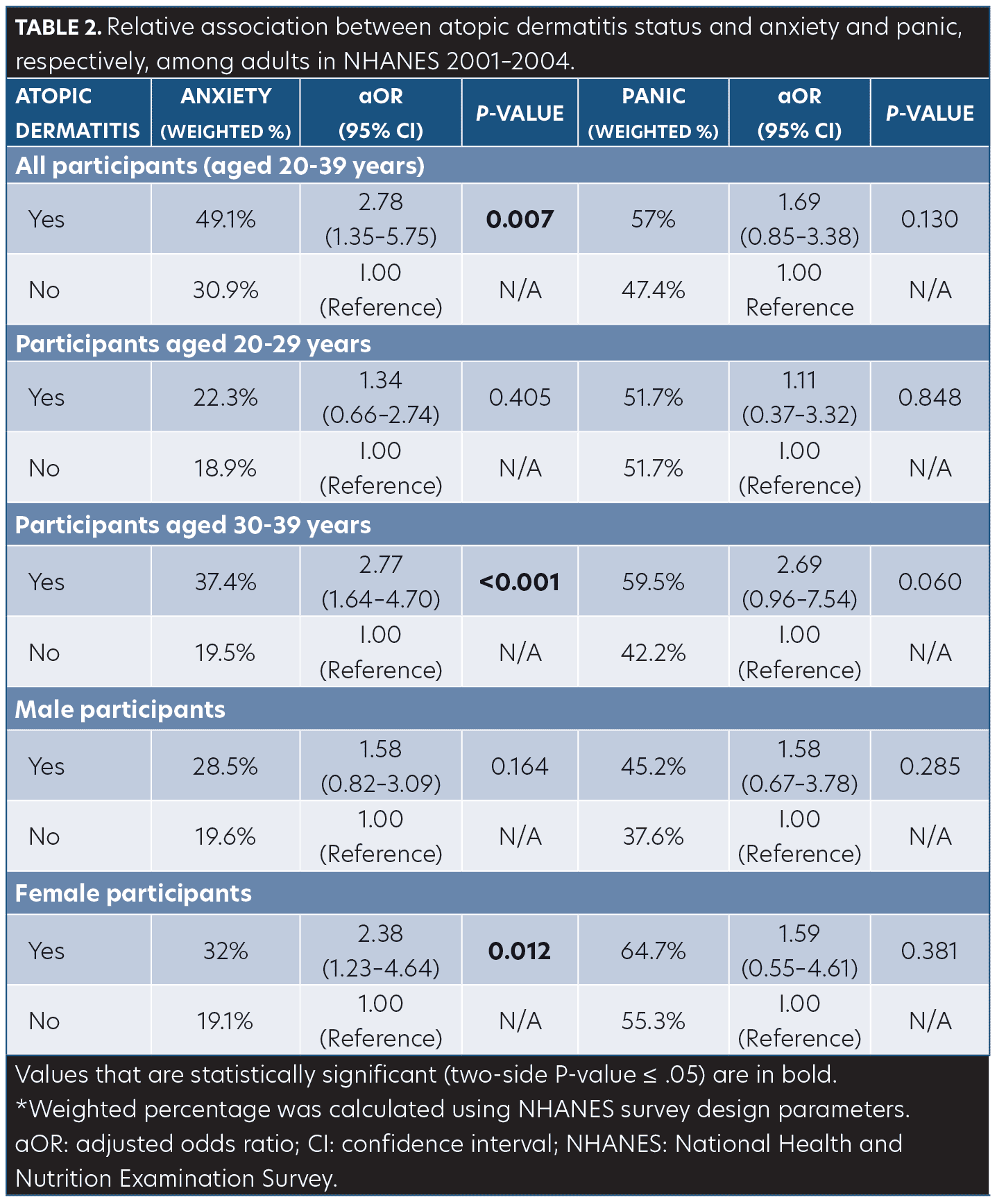 J Clin Aesthet Dermatol. 2023;16(6 Suppl 1):S10–S12
J Clin Aesthet Dermatol. 2023;16(6 Suppl 1):S10–S12
by Shivali Devjani, MS; Brandon Smith, BA; George Han, MD, PhD; and Jashin J. Wu, MD
Mr. Devjani is with SUNY Downstate College of Medicine in Brooklyn, New York. Mr. Smith is with Drexel University’s College of Medicine in Philadelphia, Pennsylvania. Dr. Han is with the Zucker School of Medicine at Hofstra/Northwell in Uniondale, New York. Dr. Wu is with the University of Miami Miller School of Medicine in Miami, Florida.
FUNDING: No funding was provided for this article.
DISCLOSURES: Dr. Wu is or has been an investigator, consultant, or speaker for AbbVie, Almirall, Amgen, Arcutis, Aristea Therapeutics, Bausch Health, Boehringer Ingelheim, Bristol-Myers Squibb, Dermavant, DermTech, Dr. Reddy’s Laboratories, Eli Lilly, EPI Health, Galderma, Janssen, LEO Pharma, Mindera, Novartis, Pfizer, Regeneron, Samsung Bioepis, Sanofi Genzyme, Solius, Sun Pharmaceutical, UCB, and Zerigo Health. Dr. Han is or has been an investigator, consultant/advisor, or speaker for AbbVie, Athenex, Boehringer Ingelheim, Bond Avillion, Bristol-Myers Squibb, Celgene Corporation, Dermavant, Eli Lilly, Janssen, LEO Pharma, MC2, Novartis, Ortho Dermatologics, PellePharm, Pfizer, Regeneron, Sanofi/Genzyme, SUN Pharmaceutical, and UCB. Authors Devjani and Smith have no conflicts of interest to declare.
ABSTRACT: Atopic dermatitis (AD) is a common, chronic inflammatory dermatologic condition that can cause discomfort and thus negatively influence the mental health of patients. Research directly exploring the relationship between AD, anxiety, and symptoms of panic in a large United States (US) adult population is limited. We studied the relationship between AD and anxiety versus panic in US adults aged 20 to 39 years. The association between AD and anxiety was significant, but not between AD and panic. This association between AD and anxiety was significantly increased in adults aged 30 to 39 years and female adults. Our study may demonstrate that a focus on the wellbeing of patients might be helpful in clinical practice. Further longitudinal studies can help to elucidate these relationships. Keywords: Atopic dermatitis; anxiety; panic; general dermatology; statistics; mental healths.
Atopic dermatitis (AD) is a common, chronic inflammatory dermatological condition characterized by the presence of pruritic, erythematous lesions on the skin. Given its uncomfortable symptoms, AD can often be debilitating and negatively influence the mental health of patients in a variety of ways. Links between AD, depression, and suicidality have been established in observational studies, with the degree of depression correlated with the severity of cutaneous manifestations.1 The link between AD and anxiety has also been documented in the literature and may be bidirectional in nature.2,3 While the chronic and debilitating nature of AD has been found to have a sizable impact on the mental health of those affected by the disease, acute psychological stress can lead to elevated immunoglobulin E (IgE) levels and eosinophils in the blood of patients with AD.4 However, there is limited research directly exploring the relationship between AD, anxiety, and symptoms of panic in a large United States (US) adult population. We studied the relationship between AD and anxiety versus panic in adults aged 20 to 39 years from the US using the 2001 to 2004 National Health and Nutrition Examination Survey (NHANES).
AD status and symptoms of anxiety and/or panic were assessed by various survey questions. There were 472 patients included in our analysis that responded to such questions. Multivariate logistic regressions were performed using STATA/MP 17.0 to explore the relationship between AD and anxiety. We controlled for age, income, education, sex, race, and body mass index (BMI) in our models (Table 1).

The prevalence of AD in our analysis was 15.5 percent. Approximately 49.1 percent of individuals with AD reported a history of anxiety, and 57 percent reported a history of panic. On the other hand, 31 percent of patients without AD reported a history of anxiety, significantly lower (p<0.01) than in patients with AD, while 47.4 percent of patients without AD reported a history of panic; this difference, while numerically lower, was not significant. After adjustment for potential confounders, there remained a significant association between AD and anxiety among participants aged 20 to 39 years of age (adjusted odds ratio [aOR]: 2.78, 95% confidence interval [CI]: 1.35–5.75, p=0.007). Subgroup analyses revealed that the odds of anxiety among subjects with AD was significantly more likely in females (aOR: 2.38, 95% CI: 1.23–4.64, p=0.012) and adults aged 30 to 39 years (aOR: 2.48, 95% CI: 1.46–4.19, p=0.001) than other participants. There was no significant association between AD and panic among these same participants after adjusting for potential confounders (aOR: 1.69, 95% CI: 0.85–3.38, p=0.130; Table 2).

Our results indicate that there is a significant association between AD and anxiety, but not panic, among adults in the US. Apprehension and worry, characteristics of anxiety, might be triggered by the chronic nature of the condition, whereas the intense fear and emotion of panic might be less relevant. Our study is limited by lack of temporality, sample size, and subjective interpretation of questions. Further longitudinal studies might be helpful to better understand the causality between AD, anxiety, and panic. If the relationship between AD and anxiety is truly bidirectional, a focus on the wellbeing of patients might improve outcomes in clinical practice.
References
- Patel KR, Immaneni S, Singam V, et al. Association between atopic dermatitis, depression, and suicidal ideation: a systematic review and meta-analysis. J Am Acad Dermatol. 2019;80(2):402–410.
- Long Q, Jin H, You X, et al. Eczema is a shared risk factor for anxiety and depression: a meta-analysis and systematic review. PLoS One. 2022;17(2):e0263334.
- Silverberg JI, Gelfand JM, Margolis DJ, et al. Symptoms and diagnosis of anxiety and depression in atopic dermatitis in US adults. Br J Dermatol. 2019;181(3):554–565.
- Hashizume H, Horibe T, Ohshima A, et al. Anxiety accelerates T-helper 2-tilted immune responses in patients with atopic dermatitis. Br J Dermatol. 2005;152(6):1161–1164.

